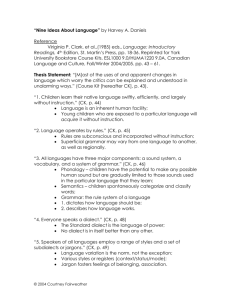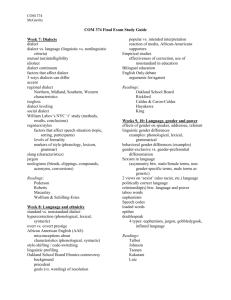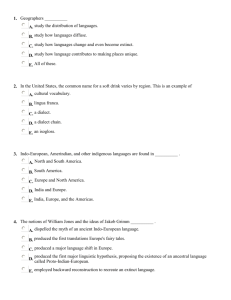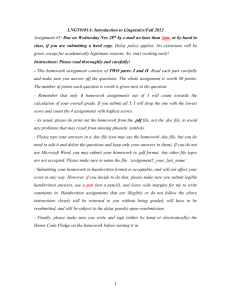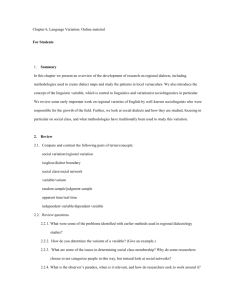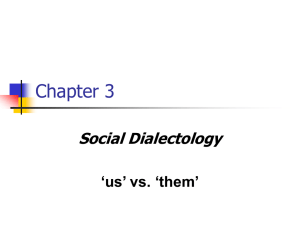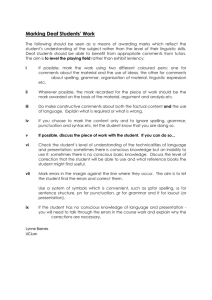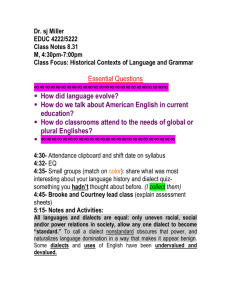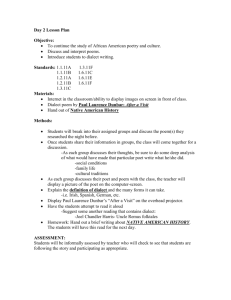Style variation checksheet
advertisement
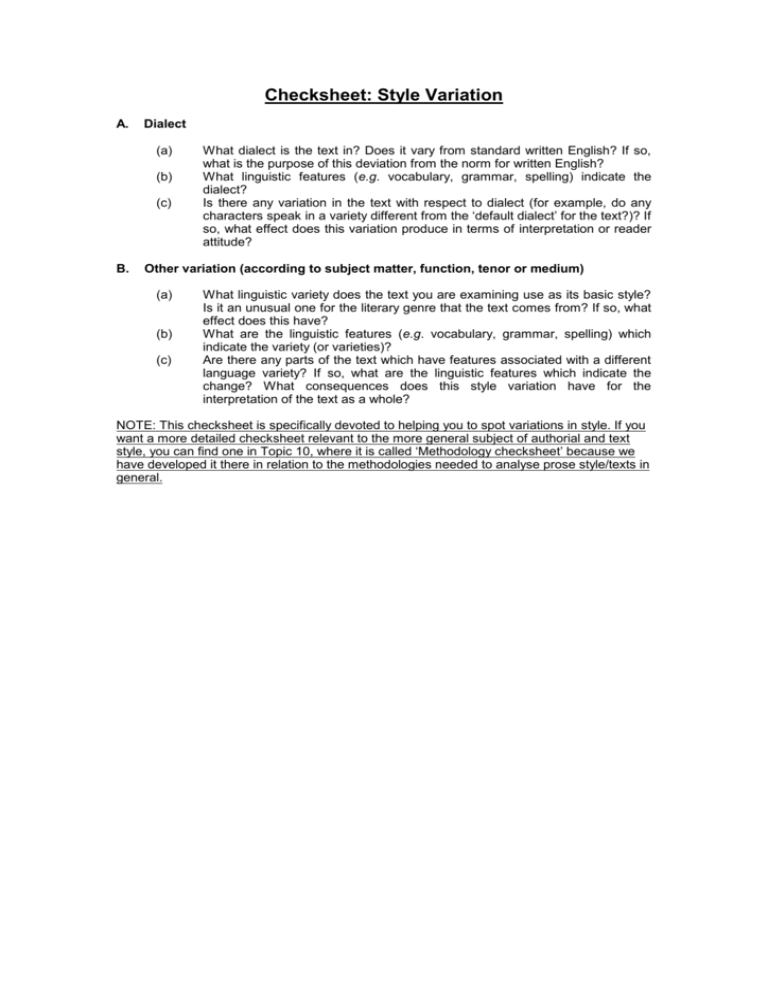
Checksheet: Style Variation A. Dialect (a) (b) (c) B. What dialect is the text in? Does it vary from standard written English? If so, what is the purpose of this deviation from the norm for written English? What linguistic features (e.g. vocabulary, grammar, spelling) indicate the dialect? Is there any variation in the text with respect to dialect (for example, do any characters speak in a variety different from the ‘default dialect’ for the text?)? If so, what effect does this variation produce in terms of interpretation or reader attitude? Other variation (according to subject matter, function, tenor or medium) (a) (b) (c) What linguistic variety does the text you are examining use as its basic style? Is it an unusual one for the literary genre that the text comes from? If so, what effect does this have? What are the linguistic features (e.g. vocabulary, grammar, spelling) which indicate the variety (or varieties)? Are there any parts of the text which have features associated with a different language variety? If so, what are the linguistic features which indicate the change? What consequences does this style variation have for the interpretation of the text as a whole? NOTE: This checksheet is specifically devoted to helping you to spot variations in style. If you want a more detailed checksheet relevant to the more general subject of authorial and text style, you can find one in Topic 10, where it is called ‘Methodology checksheet’ because we have developed it there in relation to the methodologies needed to analyse prose style/texts in general.
